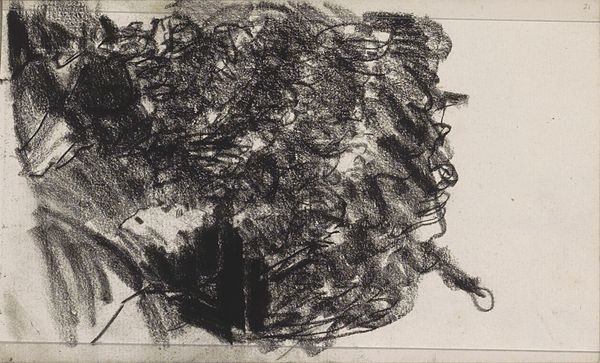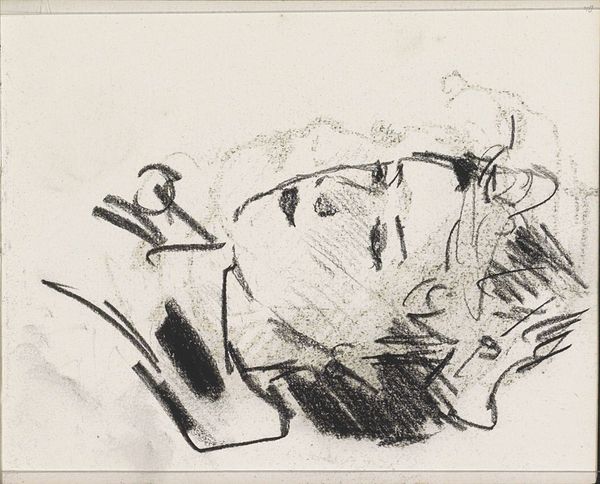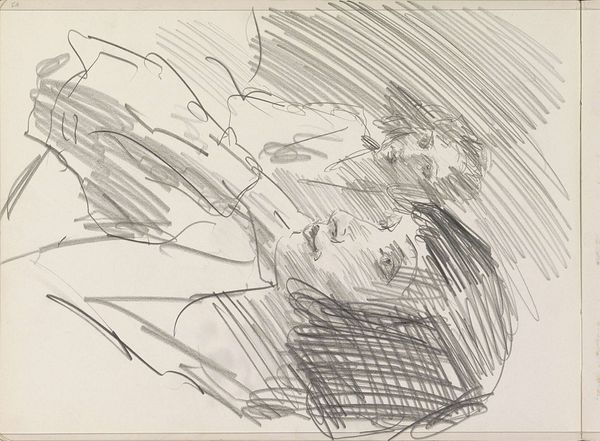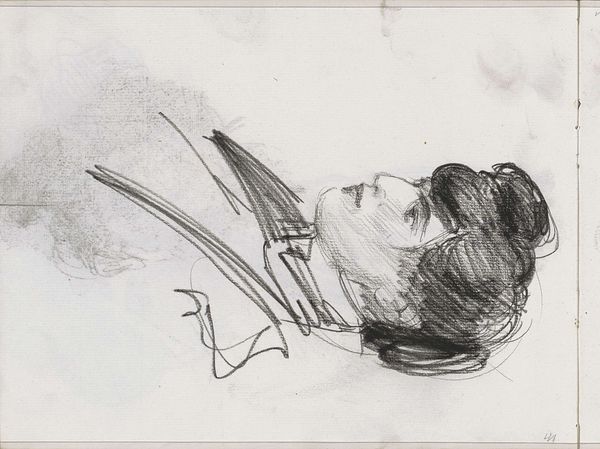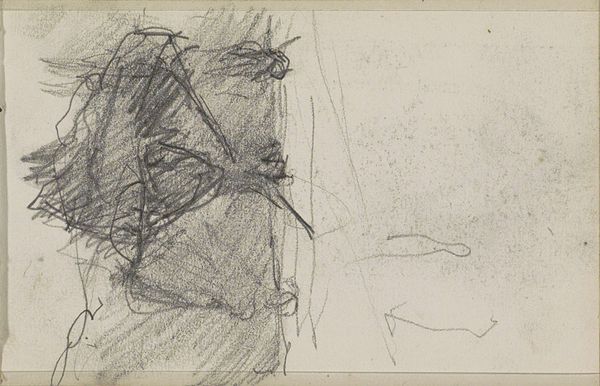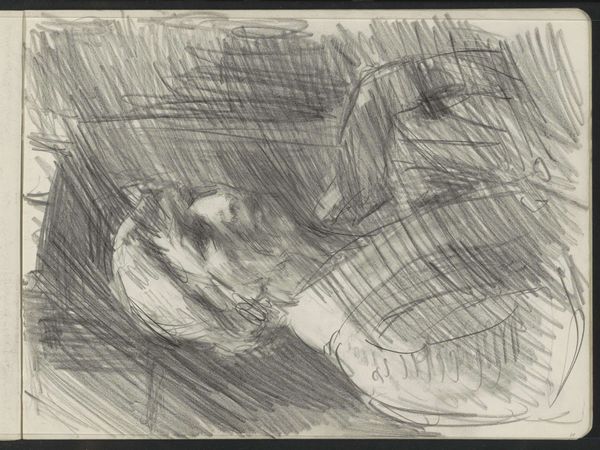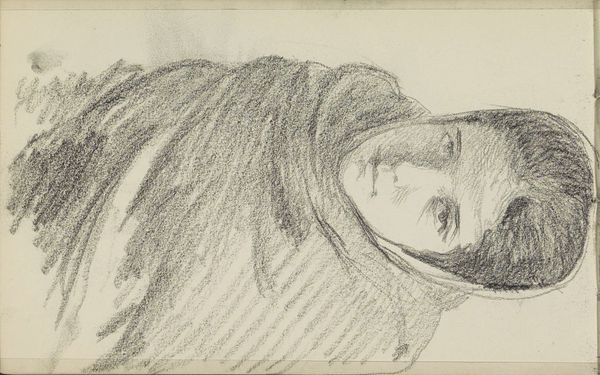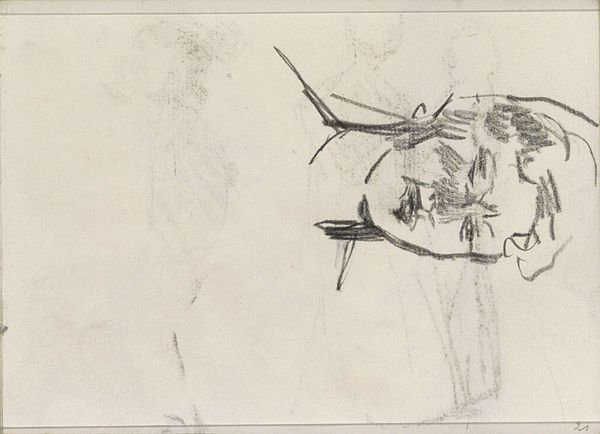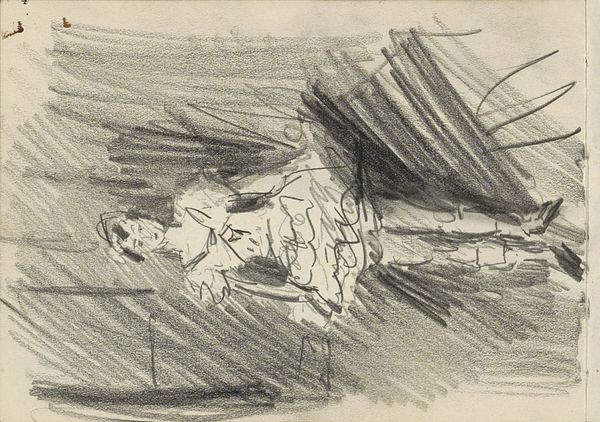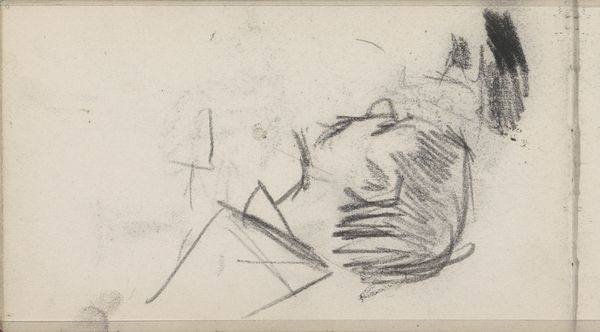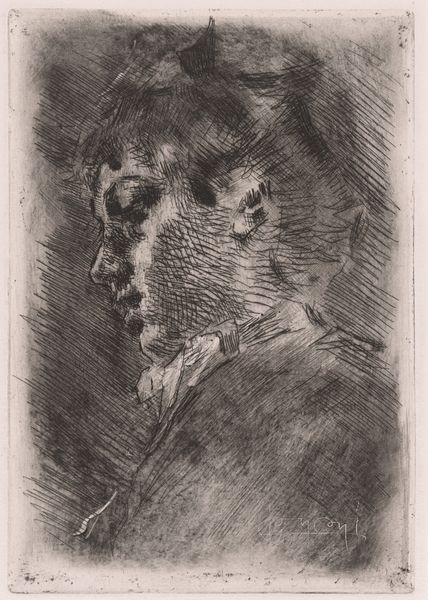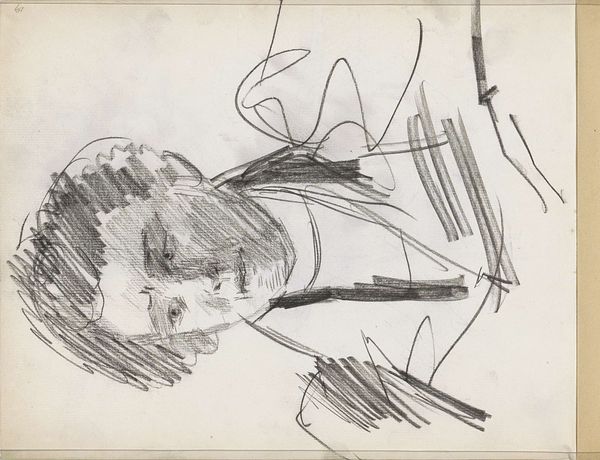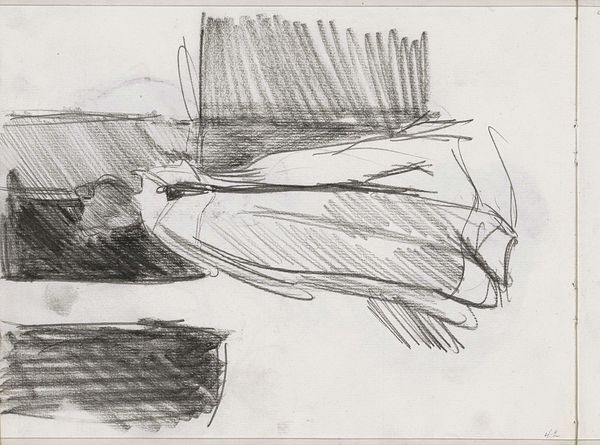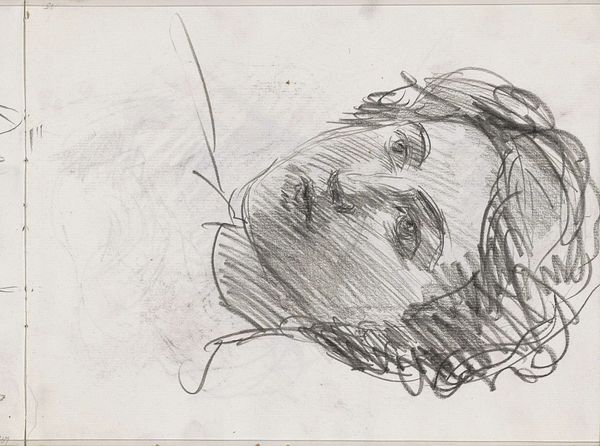
Copyright: Rijks Museum: Open Domain
Curator: Immediately striking, isn't it? There's an arresting vulnerability in those charcoal strokes. Editor: Yes, it’s… intensely personal. Melancholy almost emanates from the shading around her form. Shall we delve in? This piece, titled "Vrouw met haar armen over elkaar"—"Woman with her arms crossed"—is by Isaac Israels. It’s believed to have been created sometime between 1886 and 1903, made using pencil and charcoal. Curator: The ambiguity of the date is compelling. Those were tumultuous times, reflecting uncertainty and change. And the figure’s pose, with arms crossed… it speaks to defensiveness but also a seeking of inner solace. Her face is so softly rendered and full of resignation. Do you feel this could be more than just a random depiction, something deeper about the woman being portrayed? Editor: Undoubtedly. While rooted in the impressionistic style of the time, there are formal tensions here. The energetic hatching of lines, a frantic application, creates depth while also shrouding and partially erasing. There's a dance between clarity and obscurity. Notice how some contours dissolve, especially on the periphery. This evokes ephemerality. It resists complete definition and makes you question what lies hidden, in shadow. Curator: And the heavy charcoal surrounding her head. It isn't just shadow, is it? I see a psychological weight. The figure’s downward glance avoids the viewers’ gaze. It's the collective burden carried by women during an era of immense social constraints, and their silent but deeply felt act of resistance. Israels captures more than likeness. Editor: An interesting point about social constraint because you could even analyze how those rapid marks also create a dynamic, textured surface that moves the viewer’s eye—drawing us in and pushing us away in the same moment. A kind of surface ambivalence. The artist guides your emotional path by modulating visual experience. Curator: Right. To me, Israels is inviting us to look deeper, to connect through the figure’s embodied emotions—a window into suppressed feelings. But perhaps such "suppressed feelings" were universally experienced. Editor: Maybe. It reminds me how potent the expressive power of simplicity is. So much feeling, articulated with such basic means. A simple pencil and a charcoal stick and one has the perfect tools to convey inner worlds. Curator: Beautifully put. An evocative testament to human experience, immortalized in these very gestures of charcoal. Editor: A sketch holding so much depth. I can see why Israels remains so fascinating, more than a century later.
Comments
No comments
Be the first to comment and join the conversation on the ultimate creative platform.
